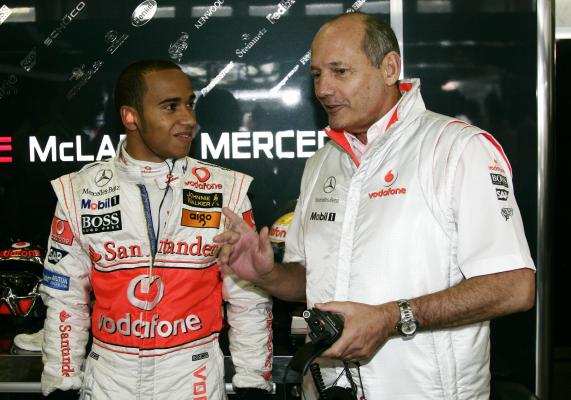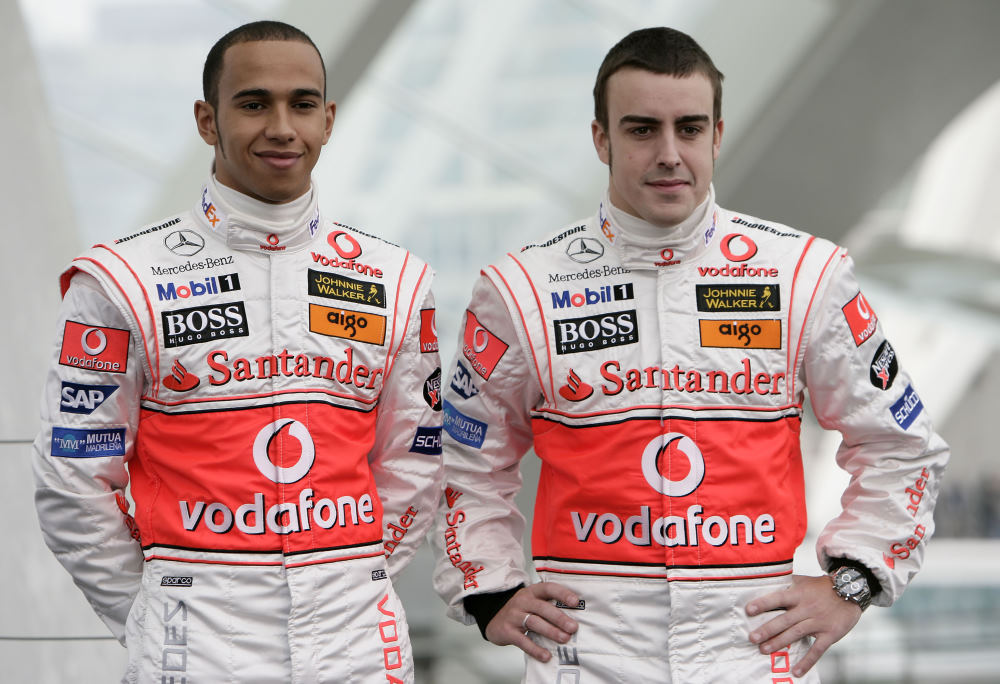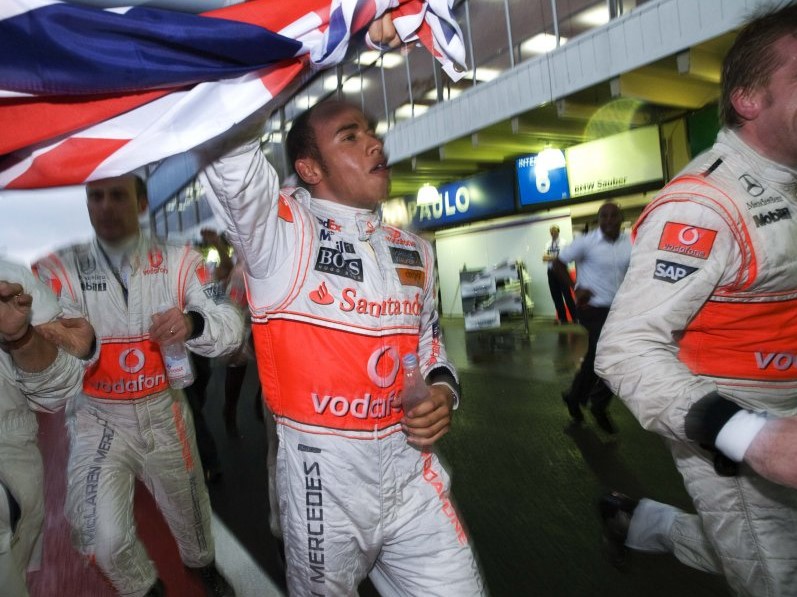An in-depth look at why Lewis Hamilton left McLaren
 |
| Lewis Hamilton |
"I want to race for you one day," were the words a ten-year old Lewis Hamilton told longtime McLaren boss Ron Dennis in 1995. Apparently, not lacking in self-confidence the young Hamilton, then a stand out go kart racer, made the legendary McLaren Formula One (F1) team principal Dennis aware that his services were available. Three years later Hamilton would join the McLaren affiliated Mercedes driver development program, and a storybook partnership was born.
With McLaren backing, Hamilton enjoyed a celebrated career in the junior formulae, before moving to the legendary F1 team in 2007. He became a Grand Prix winner after only his sixth start, and World Champion in his second season. To date, Hamilton, 27, has amassed an impressive 20 career Grand Prix victories, tied for 13th all-time, and 24 pole positions, tied for ninth all time, in six F1 seasons, all with McLaren.
 |
| Lewis Hamilton had immediate success with McLaren in 2007 |
Shockingly, however, the partnership between the legendary team and its favorite son, will come to an end, at the conclusion of this year's championship. As you almost certainly know, Hamilton announced last Friday he would be leaving McLaren for the Mercedes AMG Petronas Formula One Team. While a potential move to Mercedes had been rumored for weeks, few, including myself, believed Hamilton would actually pull the trigger.
Sure, Mercedes is a good team, but McLaren, along with Ferrari, represent the gold standard of F1. The Woking based empire boasts twelve driver championships, eight constructor titles, and 180 F1 victories in 717 races. For those not mathematically inclined, that's a better than 25% win rate.
On the other hand, if you go back to 1999, Mercedes and its numerous Brackley based incarnations have won 10 Grand Prixs. McLaren has won 11 since the start of the 2011 season. Simply put, there is no comparison between Mercedes and McLaren, and many are wondering what, in fact, was Hamilton’s motivation.
 |
| Hamilton and Ron Dennis at Nurburgring in 2007 |
Some are offering the thesis, Hamilton, "did it for the money." However, Mercedes boss Ross Brawn disputed that notion saying, " Lewis didn't come here because we offered more money, because we didn't." Rather, according to Brawn, Hamilton was intrigued by the challenge of building Mercedes into a race winner. While that assertion may or may not be the case, it does seem Brawn's claim that money was not the deciding factor is true. McLaren Team Principal Martin Whitmarsh , if anything, confirmed Brawn’s position, saying McLaren raised their initial financial bid in an attempt to keep Hamilton.
Overall, indications are Hamilton was going to be handsomely compensated at either team, and the financial differences were nominal. So, if the decision to move to a supposed lesser team wasn't about money, then what is it about?
Well, it’s complicated. However, Hamilton's situation at McLaren has changed drastically since Jenson Button joined the team three years ago. And while driving for McLaren is the envy of nearly every F1 driver, Hamilton found himself in a predicament eerily similar to many past McLaren drivers. Yes, frustrated by McLaren's refusal to define a driver hierarchy, and unwilling to continue on without a luxury his greatest rivals enjoy, that of undisputed #1 driver within their own team, Hamilton went in search of greener pastures.
 |
| Hamilton and Alonso were McLaren teammates in 2007 |
Ironically, a perfect parallel instance of this refusal to define a hierarchy is when Hamilton himself, broke into F1, with McLaren in 2007. A then 22-year old Hamilton, was of course, paired with then-reigning World Champion Fernando Alonso. Hamilton, if you remember, rattled the talented Alonso, by his ability to maintain pace with the Spaniard. And we all remember the incident, in which Alonso deliberately stayed in the McLaren pit box to prevent Hamilton from turning a qualifying lap. Adding insult to injury, Alonso was given a 5 spot grid penalty and Hamilton went on to win that weekend’s Hungarian Grand Prix.
While Hamilton would ultimately squander the championship to Kimi Raikkonen, he did beat Alonso on points. At the end of the season, Alonso, clearly frustrated with McLaren's policy of allowing the drivers to compete on equal terms, left for the not as highly regarded Renault team. Heikki Kovalainen replaced Alonso.
 |
| Hamilton celebrates his 2008 F1 championship in Brazil |
Without competition from within the team, Hamilton became World Champion in 2008. The following season was a relative disappointment, as McLaren began the year outclassed by Brawn, and Red Bull. Still, by the age of 24, Hamilton was an 11 time F1 winner, and World Champion. Further, it seemed he would clearly be the man McLaren would be building their team around going forward.
For 2010, McLaren unexpectedly signed 2009 World Champion Jenson Button to replace Kovalainen. While McLaren has remained Hamilton's team, the dynamic between he and Button has clearly differed from his previous two teammates. Whereas, Alonso saw Hamilton as a threat to his championship aspirations, and ultimately left, Button has happily co-existed with Hamilton. Whereas Kovalainen was not a threat to Hamilton on track, the performance difference with Button, while still in favor of Hamilton, is small. And while Button has been #2, he has been a very strong #2. During their three seasons together, Hamilton has won 9 races to Button's 7.
Sure, Hamilton has remained the de facto #1, but he is no longer THE UNDISPUTED #1, at McLaren. For example, Button's presence does not allow Hamilton the status that say Alonso currently enjoys alongside Felipe Massa at Ferrari, or that Hamilton, himself, enjoyed alongside Kovalainen. Rather, Hamilton is experiencing exactly what he himself was to Alonso–a formidable rival within his own team. And where would find evidence of this? Twitter, of course.
Yes, the Saturday before winning the Spa race, Button captured pole, while Hamilton qualified a disappointing 8th. Frustrated with the setup on his car, Hamilton tweeted the telemetry and setup of both his car and Button's. Button's setup was different, and in Hamilton's mind that explained the discrepancy in speed.
While the tweet was somewhat bizarre, and possibly indicative of how Hamilton's relationship with McLaren has soured, there was another underlying message: Button's role at McLaren is not to further Hamilton's championship effort, rather to give McLaren another chance at victory. Button's car was not set up to provide data for Hamilton. Rather, Button and Hamilton vie on track much like Ayrton Senna and Alain Prost did at McLaren, or Hamilton and Alonso did.
And while that policy may enhance McLaren's efforts, it does not further Hamilton's goal of becoming World Champion many times over. If Hamilton were to stay with McLaren, he would always be competing with an Alonso or Button. In other words, Hamilton not only would have to defeat Sebastian Vettel at Red Bull, and Alonso, but secure undisputed top status within McLaren, as he did when Kovalainen was there. That is something, Hamilton has found difficult since Button's arrival.
With Mercedes, that changes. Hamilton instantly becomes THE GUY. He becomes Alonso at Ferrari, Sebastien Vettel at Red Bull, or the Michael Schumacher of years gone by at Ferrari. Sure, Nico Rosberg will ostensibly have equal status, but Rosberg is not elite. Rosberg is not someone you build a team around.
And while Mercedes is not McLaren, the Ross Brawn led team isn't exactly chopped liver either. For one, the team enjoys the factory support of a major automobile brand. The team has a proven technical leader in Brawn, who has engineered world championship cars with three different teams.
In other words, McLaren is unquestionably the known commodity, the safer choice. But the potential for Hamilton at Mercedes is greater, and Hamilton needs to look no further than the man he is replacing, Michael Schumacher. Schumacher, of course, moved to a down on its luck Ferrari, and ultimately won 5 world titles for the Prancing Horse.
In addition to the opportunity to have a team built entirely around him, Mercedes likewise offers Hamilton the brand, tremendous opportunities. Of course, McLaren drivers are expected to promote McLaren, and work on behalf of McLaren's partners. Former McLaren driver David Coulthard noted this recently, saying that Hamilton has "been managed to within an inch of his life," at McLaren. While Coulthard's statement is probably an exaggeration, it is illuminating with regard to Hamilton.
At McLaren, Hamilton is a part of a large racing empire. His wins are McLaren and Hamilton wins. Heck, McLaren even keeps the trophies, and after all, McLaren is the one that groomed Hamilton, and gave him his opportunity. See, any success Hamilton has at McLaren is by and large, shared.
Of course, that is all about to change. After all, that ten-year old boy, who so boldly approached Ron Dennis, did in fact, race for McLaren, and race quite well. However, maybe one day racing for McLaren wasn't all he had in mind.
Brian Carroccio is a columnist for AutoRacing1.
